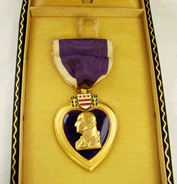The Collections Department has spent the first quarter of this year accessioning the many donations from the end of 2007. There were several large collections of papers and artifacts donated, which cover several periods of South Carolina’s military history.
 From the Civil War period, we were given the Thomas W. Wingo collection. This consisted of a large number of wartime letters from Wingo to his wife Cornelia, with interesting details of the battles he was in, his injuries, and the medical treatment he received. Other family papers and photographs, including his daughter’s post-war album of family tintypes, extend the picture of his life up until his death in 1900. Artifacts donated by the family include his militia sword and the 1850’s Jenny Lind-style trunk his papers were kept in by his family. Two photographs from the Wingo Collection are included in the museum’s component of the Civil War Photography exhibit opening March 28.
From the Civil War period, we were given the Thomas W. Wingo collection. This consisted of a large number of wartime letters from Wingo to his wife Cornelia, with interesting details of the battles he was in, his injuries, and the medical treatment he received. Other family papers and photographs, including his daughter’s post-war album of family tintypes, extend the picture of his life up until his death in 1900. Artifacts donated by the family include his militia sword and the 1850’s Jenny Lind-style trunk his papers were kept in by his family. Two photographs from the Wingo Collection are included in the museum’s component of the Civil War Photography exhibit opening March 28.
 From World War II, the museum received the personal effects of Pvt. Cleney Rogers, who was a replacement soldier in Normandy after D-Day. He was killed in action in August of 1944. His letters are at Caroliniana Library, and we received the objects returned to his family after his death, including the Purple Heart and Service Medal awarded posthumously. The blood-stained money belt he was wearing when he was killed still contained the English coins he had collected before he shipped over the Channel into France.
From World War II, the museum received the personal effects of Pvt. Cleney Rogers, who was a replacement soldier in Normandy after D-Day. He was killed in action in August of 1944. His letters are at Caroliniana Library, and we received the objects returned to his family after his death, including the Purple Heart and Service Medal awarded posthumously. The blood-stained money belt he was wearing when he was killed still contained the English coins he had collected before he shipped over the Channel into France.
From the Vietnam War, our collection was enhanced by the addition of the papers, correspondence, and artifacts of Capt. Paul McClanahan relating to his Air Force service during that conflict. Some of the most interesting things from that collection are the 38 reel-to-reel tapes conveyed back and forth between McClanahan and his wife as recorded messages to each other. The museum will be transcribing that correspondence as soon as audio equipment is found which will play the tapes and record them digitally. This technological challenge is the first of many we will encounter as we increase our twentieth-century collections.
Rachel H. Cockrell, Registrar
